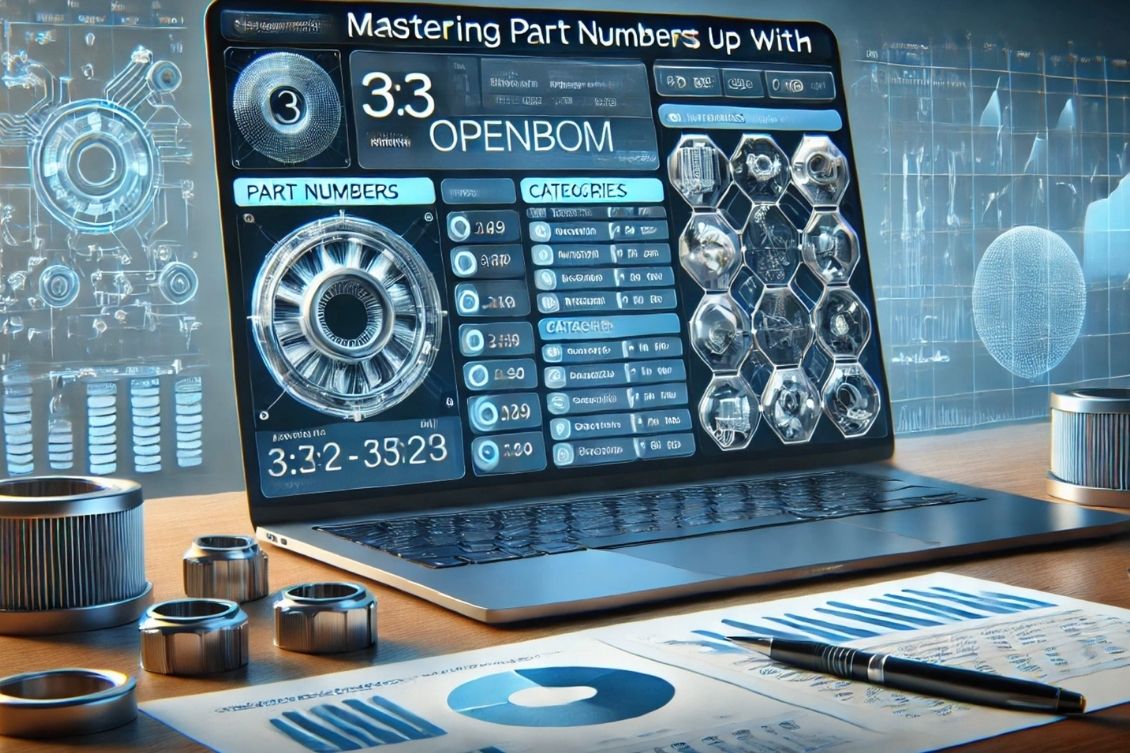
I’m excited to introduce another article from our OpenBOM How-To learning series. And today we will talk about Part Numbering best practices. At every company we come to, we start our conversation with Part Numbers. It is such a fundamental topic. Don’t miss it in your PDM/PLM journey.
Why Are Part Numbers So Important?
Part Numbers are the backbone of effective product data management. They serve as unique identifiers for parts and assemblies, enabling precise tracking, efficient communication, and seamless collaboration across teams. Without a well-structured Part Numbering system, companies can face significant challenges, including duplicated data, miscommunication, and errors in manufacturing processes.
In today’s fast-paced engineering and manufacturing environments, correct Part Number setup is critical for ensuring data consistency, supporting CAD integration, and streamlining supply chain operations. OpenBOM provides flexible and robust tools for managing Part Numbers, helping companies create and maintain an efficient system tailored to their needs.
To dive deeper into the importance of Part Numbers, explore OpenBOM’s Part Number Best Practices and Managing Part Numbers.
Learning Videos: Mastering Part Numbers with OpenBOM
In the following section we show three learning videos with fundamental use cases- how to use and import existing part numbers, how to set up part numbers, and more advanced – how to use categories and multiple catalog systems in OpenBOM.
Working with and Importing Existing Part Numbers
Managing existing Part Numbers is a common scenario when transitioning to OpenBOM. In this video, you’ll learn how to:
- Import existing Part Numbers from Excel or spreadsheets into OpenBOM.
- Map data accurately to avoid duplication and maintain consistency.
- Integrate Part Numbers from CAD systems like SolidWorks for seamless workflows.
Watch the video here:
Setting Up and Generating Part Numbers (Including CAD Integration)
Creating new Part Numbers in OpenBOM is a simple yet powerful process. This video covers:
- Configuring rules for new Part Number generation.
- Automating Part Number creation to ensure consistency and reduce manual errors.
- Syncing Part Number settings with CAD systems like SolidWorks and Onshape.
Watch the video here:
Working with Categories and Part Number Setup
Organizing your data using categories can significantly enhance your Part Numbering system. This video explores:
- Using multiple catalogs (categories) in OpenBOM to structure your data.
- Generating Part Numbers based on specific categories for better organization.
- Integrating category-based Part Numbers with CAD tools for a streamlined workflow.
Watch the video here:
Conclusion: Take Time to Get Your Part Numbers Right
Part Numbers are not just numbers; they are critical components of your company’s data management strategy. Setting up a robust Part Numbering system with OpenBOM ensures data accuracy, improves efficiency, and supports scalability as your company grows. By investing time in properly configuring OpenBOM’s Part Number tools, you’ll save countless hours and avoid potential headaches down the line.
Start your journey to better Part Number management today with OpenBOM! Explore our Knowledge Base for more resources and tips.
REGISTER FOR FREE and check how OpenBOM can help you.
Best, Oleg
Join our newsletter to receive a weekly portion of news, articles, and tips about OpenBOM and our community.










